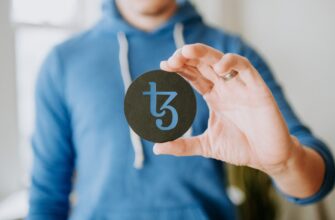## What is Ethereum RPC?
Ethereum RPC (Remote Procedure Call) is the communication protocol that allows applications to interact with the Ethereum blockchain. Acting as a messenger between your software and Ethereum nodes, RPC enables actions like reading blockchain data, sending transactions, and executing smart contracts. Without RPC endpoints, decentralized apps (dApps), wallets, and developer tools couldn’t access Ethereum’s network – making it the invisible backbone of Web3 infrastructure.
## How Ethereum RPC Works: The Technical Flow
Ethereum RPC follows a client-server model where applications (clients) send JSON-formatted requests to Ethereum nodes (servers). Here’s the step-by-step process:
1. **Request Initiation**: Your application sends a JSON-RPC request (e.g., querying an account balance)
2. **Node Processing**: An Ethereum node (like Geth or Erigon) receives and validates the request
3. **Blockchain Interaction**: The node retrieves data from the blockchain or broadcasts transactions
4. **Response Delivery**: Results return to your application in standardized JSON format
This HTTP/WebSocket-based communication uses methods like `eth_blockNumber` or `eth_sendTransaction` to execute specific operations.
## Essential Ethereum RPC Methods Every Developer Should Know
Core JSON-RPC methods powering Ethereum interactions:
– `eth_getBalance`: Retrieves Ether balance for any address
– `eth_sendRawTransaction`: Broadcasts signed transactions to the network
– `eth_call`: Executes read-only smart contract functions
– `eth_getLogs`: Queries event logs from smart contracts
– `net_version`: Identifies the Ethereum network (Mainnet=1, Ropsten=3)
– `web3_clientVersion`: Checks connected node’s client software
## Step-by-Step: Connecting to an Ethereum RPC Endpoint
Follow these steps to integrate RPC into your project:
1. **Choose Your Node Provider**:
– Local node (self-hosted Geth/Nethermind)
– Managed services (Infura, Alchemy, QuickNode)
– Public endpoints (limited reliability)
2. **Configure Network Parameters**:
– Mainnet RPC URL: https://mainnet.infura.io/v3/YOUR_KEY
– Testnets: Separate endpoints for Goerli/Sepolia
– Chain ID: 1 for Mainnet
3. **Implement in Code** (Web3.js example):
“`javascript
const Web3 = require(‘web3’);
const web3 = new Web3(‘https://mainnet.infura.io/v3/YOUR_KEY’);
async function getBlock() {
const block = await web3.eth.getBlockNumber();
console.log(“Latest block:”, block);
}
“`
## Top Use Cases for Ethereum RPC Endpoints
– **dApp Development**: Frontends fetching real-time blockchain data
– **Wallet Integration**: Transaction signing and balance checks
– **DeFi Protocols**: Price oracle updates and liquidity pool monitoring
– **Block Explorers**: Indexing and displaying chain history
– **Node Management**: Monitoring sync status and peer connections
## RPC vs. Alternatives: Why Ethereum Chooses JSON-RPC
While other protocols exist, JSON-RPC dominates Ethereum due to:
| Feature | JSON-RPC | REST | GraphQL |
|—————-|———-|——|—————|
| **Flexibility** | High | Low | High |
| **Overhead** | Low | Medium| Medium |
| **Real-time** | WebSocket| No | Subscriptions |
| **Ethereum Use**| Native | Wrapper| Via indexing |
Ethereum’s native JSON-RPC support ensures direct node communication without translation layers.
## Critical Best Practices for RPC Implementation
– **Use Private Endpoints**: Public RPCs have rate limits and security risks
– **Enable HTTPS**: Always encrypt traffic to prevent MITM attacks
– **Implement Error Handling**: Manage common errors like `-32005` (request limit exceeded)
– **Monitor Performance**: Track latency and error rates with tools like Prometheus
– **Rotate API Keys**: Regularly update credentials for compromised key mitigation
## Ethereum RPC FAQ
### What’s the difference between RPC and an Ethereum node?
RPC is the communication protocol, while nodes are software implementations (Geth, Besu) that expose RPC interfaces. Nodes process requests; RPC defines how requests are formatted.
### Can I use Ethereum RPC for free?
Public endpoints offer limited free tiers, but production applications require paid node services for reliability, speed, and higher request quotas.
### Is Ethereum RPC secure?
RPC itself is protocol-secure, but endpoints require protection:
– Never expose node RPC publicly without authentication
– Use whitelisted IPs and API keys
– Avoid sending private keys via RPC
### How do I troubleshoot “connection refused” errors?
1. Verify endpoint URL accuracy
2. Check firewall/port settings (default: 8545 HTTP, 8546 WS)
3. Confirm node synchronization status
4. Test with curl: `curl -X POST –data ‘{“jsonrpc”:”2.0″,”method”:”web3_clientVersion”,”params”:[],”id”:1}’ -H “Content-Type: application/json” YOUR_ENDPOINT`
### What’s the future of Ethereum RPC?
With Ethereum’s evolution, expect enhancements like:
– Improved batch request handling
– Standardized authentication (RFC 6750)
– Enhanced subscription models for real-time data
– Integration with light client protocols
## Final Thoughts
Mastering Ethereum RPC unlocks the full potential of blockchain development. By understanding its mechanisms, key methods, and security practices, developers build robust applications that seamlessly interact with Ethereum’s decentralized ecosystem. As layer 2 solutions and sharding advance, RPC remains the fundamental bridge connecting users to the world of smart contracts and decentralized innovation.








